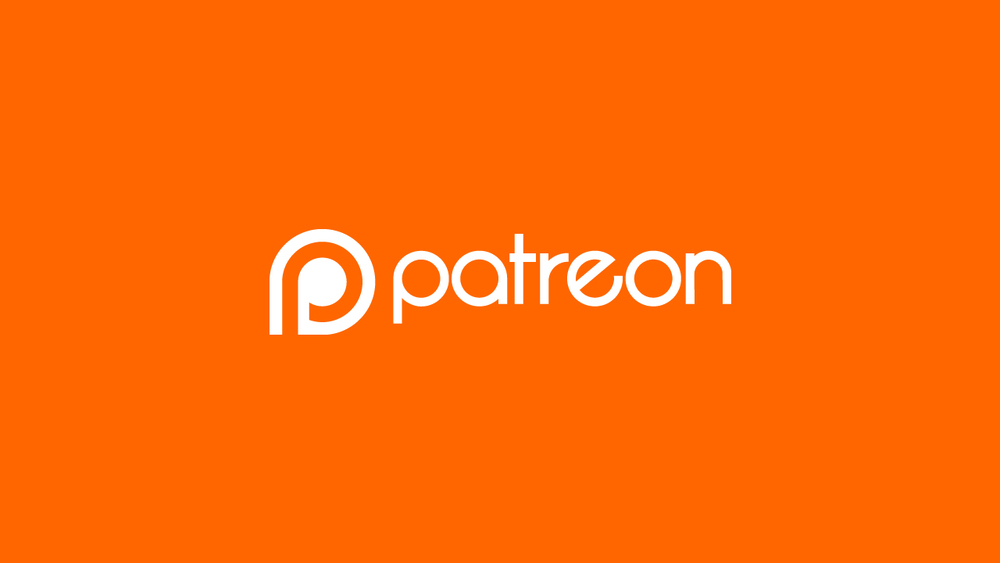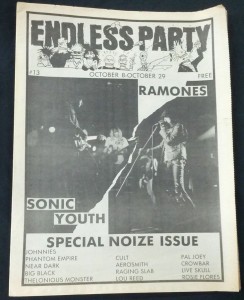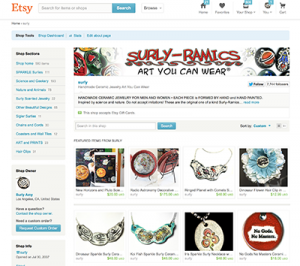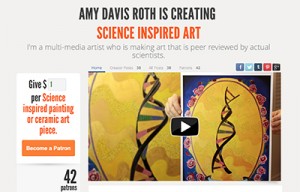How Patreon is Changing the DIY Movement

I recently hosted a meetup for my LAWAAG group with a speaker named Teka-Lark Fleming who gave a very fascinating talk about the history of the DIY movement in Los Angeles. (DIY, for anyone who is unfamiliar stands for do it yourself.) Teka talked about the early days when a lot of revolutionary, anarchist and art zines came into existence. As with most underground art and music movements, these zines (short for magazines) followed the creation of another technology- the xerox machine. There was a time in the late 70’s and early 80’s when suddenly most of the American youth suddenly had access to affordable and sometimes free copies. This was a big deal!  Suddenly, you could print your own manifestos and make copies of your comics and art and talk about music and most importantly, share it and spread your messages far and wide. The punk scene immediately took advantage of this technology and used underground zine culture to spread information about art and music and events.
Suddenly, you could print your own manifestos and make copies of your comics and art and talk about music and most importantly, share it and spread your messages far and wide. The punk scene immediately took advantage of this technology and used underground zine culture to spread information about art and music and events.
As time went on and the internet became more readily available, zines went out of fashion and somewhat lost their appeal – though some still exist today, they aren’t a cultural phenomenon in the way that something like “selfies’ are now. The DIY culture has always been rooted in affordability, combined with communication and self expression. One often was part of DIY because one couldn’t afford to buy- and so one had to find a way to make. Websites and blogs became a more effective way of spreading art and the news in such a manner, and so over time, attention turned in that direction.
As attention turned away from the lesser tech of the xerox machine and towards the newer tech of the internet, companies obviously took notice. And this is the part that really got my attention in Teka-Lark Fleming’s discussion with our group. She argued that DIY culture is ultimately dead now because you really can not be DIY anymore. The “Do it yourself” aspect of DIY has been stripped away in our smart phone generation. You can no longer spread your message or get your art out to the world without depending upon a large corporation to help you. You need Apple or Samsung or Facebook or Etsy to be your middleman now. You can create an online zine, which is exactly how this blog started back in day, by the way, but eventually you will have to pay someone like WordPress to host your images and messages or you will likely slip into obscurity. You have to pay into the capitalist machine to do it yourself.
This realization had me downright depressed.
I had always identified with the DIY movement and have made things myself since I was a wee little, surly child. I was an independent artist dammit! But the truth is, I could not make a living today without a platform online to sell my work. Etsy came along at a time in my life that allowed me to quit my day job and make art full-time.  I told myself I was totes DIY but I never would have been able to do it without their tech allowing me to reach a worldwide audience. I can hand-make everything and create art with just my two tiny hands but the method of spreading that art and the information surrounding it and accepting payment, is different now. We are all connected in some way to the corporate machine.
I told myself I was totes DIY but I never would have been able to do it without their tech allowing me to reach a worldwide audience. I can hand-make everything and create art with just my two tiny hands but the method of spreading that art and the information surrounding it and accepting payment, is different now. We are all connected in some way to the corporate machine.
And so it goes.
Now, one can feel sad and get all nostalgic for a past filled with stapled together, black and white flyers gone-by, or one can take this new information and find the positive and make it work for you. Much like Etsy was a brilliant platform in its early days to catapult artists and crafters into a position where they could finally make a living with their work, regardless of location, so is today’s newer platform for creators called, Patreon. (I have different feelings about Etsy these days- but that would take a whole other blog post to dissect.)
Patreon took a cue from platforms like Kickstarter and Indiegogo that allowed people to take advantage of social media to crowd source and fundraise for new entrepreneurial projects. But what Patreon has done that is different from those outlets is to create a home for DIY community members, who like me, put out a constant flow of creative content on a regular basis- some that is not for sale- or would otherwise be free. Personally, I don’t have a use for Kickstarter as much as I have a need for Patreon.
Patreon’s title is obvioulsy playing on the concept of patron of the arts and it allows visual artists and other content creators to build a publicized home on the internet where they can produce, not a one time burst of work with a kickstarter, but a regular flow of content and the people who love that work can support them by being patrons. For far less then the cost of a latte at Starbucks and often for as little as one dollar a month you can become a patron and show support to an artist you admire or care about. And this is a big deal for artists who are trying to do their own thing- as much as one can in today’s economy.
In my opinion this new platform is the closest thing we have to allowing a true DIY culture to exist again.  Yes, it is still part of the corporate machine and yes, we need credit card companies and Paypal and smart phones and tablets and computers and the platform itself to exist in order to then make our art. But it is allowing us to once again create and distribute work (mostly) on our terms in (primarily) the way that we want with direct contact and interaction with the people we hope to share our art with. Patreon is the latest xerox machine.
Yes, it is still part of the corporate machine and yes, we need credit card companies and Paypal and smart phones and tablets and computers and the platform itself to exist in order to then make our art. But it is allowing us to once again create and distribute work (mostly) on our terms in (primarily) the way that we want with direct contact and interaction with the people we hope to share our art with. Patreon is the latest xerox machine.
Time will only tell if this platform will remain an oasis for creators or if something new will come along and push it out of the spotlight. For now, it is the best platform I have found, that gives the community at large the ability to directly support content creators and visual artists.
Did I mention you can literally make a huge difference for as little as $1 a month? That is the beauty of it. It used to be that the majority of visual artists, like myself, could only really survive and put food on their table if they had either a rich patron who supported them- and then often dictated the tone of what the artist created, or gallery representation in one of the upscale high-art galleries. That is such an extremely closed system that the mass majority of artists are doomed to fail and if they do succeed, they are in essence, completely dependent on the desires of the wealthy supporter or of a gallerist. This doesn’t leave much sense of creative freedom to try new things or react in any sort of meaningful political-art sense for fear of offending. It leaves an artist dependent on one or two people, and only if you are even lucky enough to find yourself in the presence of those one or two people. And let’s be honest here, that community is also very skewed towards the male artist. Look around your local art museum and compare the number of women represented to the number of men. Patreon allows one, regardless of gender or class, to have hundreds or even thousand of patrons, who for pocket change, can support an artist, allowing them the freedom to create the art that the artist wants to create without fear of losing support by making a misstep or following a creative whim. There is power in numbers. If you lose a one-dollar-a -month-patron, you have a much easier chance of finding another person to fill that spot as opposed to obtaining another rich person or an art agent who wants to support you. And that is the main reason that Patreon is allowing us in some small way to put the YOU back in Do It Yourself. At least for now.
On that note, here is a short list of some Patreons I like, that you might like to support too. For a dollar a month you can support all of these content creators for less than the cost of your average fast food lunch. That is pretty sweet.
1. Me! Support Amy Davis Roth making science inspired art that is peer reviewed by actual scientists!
2. Rebecca Watson is creating videos!
3. Ashley Miller is creating blogs, books, videos and paintings!
4. Molly Lewis is creating ukulele tunes!
5. Len Peralta is creating speed drawing videos!
6. Noadi is creating sculpture, illustration and jewelry!
Be sure to nose around the site. There are lot’s of artists and content creators worth supporting. Now, I have to get back to doing it myself! Cheers!





Interesting.
The Web was originally intended to be a platform for changing the way people do science. Twenty years later the only thing that has changed is that it is becoming a little easier to spot the frauds and some fields have moved towards an open literature. We didn’t do a very good job on that front, which is maybe not surprising. The little detail CERN leave out of their ‘birthplace of the Web’ bit is that they kicked us all out in 1995 because the Web was crowding out the physics for attention.
We do seem to have done a bit better in the arts. Back in the 1990s there were almost no opportunities for graphic artists outside of advertising and magazines. Making Web sites for companies might not be what creative artists aspire to work on, but its better than starving while you hope your creative work catches on.
It might be possible to merge the two. A couple of years back a university tried to get me to take an adjunct professorship to develop a security course on how to break into machines. This didn’t seem like a sensible or a fair plan as the 20 or so students taking the course would be paying a total of around $90K in fees and I would get perhaps a tenth of that for 200-300 hours work.
This post seems to forget that xerox machines, paper, staples, thumb tacks and sellotape are neither a natural given, nor that buying them entails “pay[ing] into the capitalist machine to do it yourself.” Or it assumes that buying paper and a camera makes you less dependent on the corporate machine. To my mind, whatever your means of distributing your art (or spreading awareness and marketing), the raw materials to do so (cameras, film, fixer, glue, staples, paper, a xerox machine, a website profile, …) always make you depend on someone or something else. That’s the definition of civilization, as far as I’m concerned.
Of course when a person lives in a capitalist society, they have to participate in capitalism on some level or other (in fact, pretty much everyone in the world has to participate in it at this point). But Amy’s point is that some platforms, like Patreon, are less exploitative than others and thus provide alternatives that let people retain more control over their own creative work.
Some people just have an ‘older is better’ attitude. I noticed it a lot among anarchists in college. I mean, not older sexual mores or anything like that, but older technology.
But the reality is, if I put something on Youtube, more people will see it than if I just printed out my own zine and, what, exactly? Paid to have it placed in a bookstore? If I can’t afford distribution, placed it around bus stops and libraries à la Jehovah’s Witnesses with the Watchtower?
I think Patreon is a wonderful idea! I joined on a whim, when I supported a popular mountain dulcimer player, Bing Futch. Patreon asked me if I wanted to join as a creator. Well, I’m a writer, so I thought, “Sure, why not.” But Bing is a really nice guy who also believes in supporting his fellow creators. He turned around and immediately supported my Patreon. “Oy–what do I do now?” I thought. “How do I even come up with writing-related rewards?”
Writing is a lot harder to commoditize than your cool art! I managed to come up with a few writing rewards. Most of them are kind of lame, but since my new nonfiction writing career is starting to take off (Skeptical Inquirer and Free Inquiry), I’ve also been able to email version of my work before they appear in print. I used to be a fiction writer before my 6-week coma–it’s a long story, which I’ve been writing about.
But at the time, I didn’t know I would enjoy such surprisingly quick success, so I put up semi-precious stone jewelry as rewards, which I had previously made for myself and for gifts. As it turned out, my supporters weren’t particularly interested in the jewelry; they just wanted to support my writing!
BTW, neither magazine, as big as they are, pays any money. Such is the life of a freelance writer. That’s makes Patreon even more vital as an income source. You can’t eat contributor’s copies; good for your career, less filling!